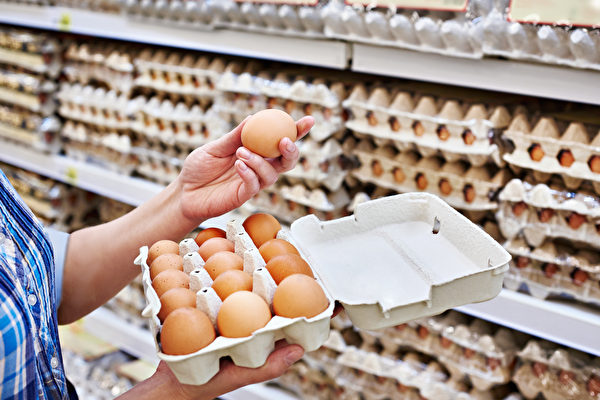After years of rising prices and several months of stability, food grocery prices in the United States saw a decrease for the first time in April this year. Shoppers can finally breathe a little easier, with the biggest drop seen in the price of eggs.
According to data released by the U.S. Bureau of Labor Statistics on Wednesday (May 15th), after seasonal adjustments, grocery prices fell by 0.2% from March to April. On the other hand, restaurant food prices rose by 0.3% during the same period.
In terms of food categories, the situation is mixed – some food prices fell while others rose. The meat, poultry, fish, and egg index fell by 0.7% month-on-month. Eggs saw the most significant impact with a 7.3% decrease in price.
Though the drop in food prices may seem minimal, it is a welcomed reversal. Factors such as disrupted supply chains, the impact of the war in Ukraine on global agricultural exports, extreme weather affecting crop yields, and opportunistic price hikes by businesses led to a steep rise in food grocery prices since the beginning of the pandemic, far exceeding the overall inflation rate in recent years.
However, grocery prices are still higher compared to a year ago. As of April, food prices increased by 1.1% over the past 12 months, while the overall inflation rate climbed by 3.4%.
Over the course of a year, some foods became cheaper: ham prices dropped by 3.4% compared to the previous year, cheese by 3.3%, fish and seafood as well as potatoes by 2.1%. Coffee prices fell by 2%, milk by 1.2%, and rice by 1%.
Significant price reductions were seen in two categories: apples prices plummeted by a notable 12.7% due to oversupply last year, while egg prices, which had spiked in the previous year, dropped by 9% following a recent downward trend.
Despite this, some products became more expensive over the year, especially beef, partly due to a severe supply shortage caused by deadly wildfires in Texas. The price of raw beef soared by 10.1% compared to the previous year. Key foods for the summer grilling season also saw substantial increases, with hot dogs up by 7.1%, raw steaks by 6.5%, and ground beef by 6%.
In other food categories, flour increased by 2.5% year-on-year, and fruits and vegetables collectively rose by 1.7%.
In the transition from March to April this year, some food prices became cheaper. Eggs saw a 7.3% drop, apples a 2.7% drop. Overall, fresh fruits and vegetables decreased by 1.1%, milk by 0.8%, poultry by 0.6%. However, some prices increased: breakfast sausages rose by 3.4%, flour by 3.2%, ham by 1.8%, bacon by 0.8%.
Despite the declining trend in food prices, restaurant menu prices remain high, particularly at fast-food establishments.
In the approximately three years following the pandemic, food companies have significantly raised prices, citing the need to recoup escalating costs. They anticipate that consumers will adjust and continue to purchase their favorite brands, leading to the highest ratio of food spending to income for American consumers in the past 30 years.
As of April, restaurant prices rose by 4.1% over the year. Sit-down restaurant meals increased by 3.4%, while prices at limited-service restaurants (only serving at the counter) rose by 4.8%.
Customers have also started to dine out less frequently. Data from market research company Revenue Management Solutions shows a 3.5% decrease in foot traffic at U.S. fast-food restaurants in the first three months of this year compared to the same period last year.
Applebee’s and Chili’s note that lunch prices at McDonald’s are now almost equivalent to casual burger restaurants.
According to the latest data from market research company Datassential, after analyzing a sample of 70 major chain restaurants and thousands of independent restaurants, menu prices at fast-food and casual dining establishments in California have increased by an average of 10%.
Another analysis found that Chick-fil-A raised prices by 10.6% from February 15th to April 15th, while Starbucks increased by 7.8%, Shake Shack by 7.7%, Chipotle by 6.9%, and Taco Bell by 4.1%.

